Stop Motion Pioneers
Joseph Plateau -

Joseph Plateau was born in 1801 and he lived until 15 September 1883. He was a Belgian physicist and he was the first person to demonstrate the illusion of a moving image. To do this he used counter rotating disks with repeating drawn images in small increment of motion on one and regularly placed slits in the other. He called this device, created in 1832, 'the Phenakistoscope'. He also researched into the effect of colours on the retina (duration, intensity and colour), his mathematical research into the intersections of revolving curves (locus), the observation of the distortion of moving images, and the reconstruction of distorted images through counter revolving discs (he dubbed these anorthoscopic discs). (http://en.wikipedia.org/wiki/Joseph_Plateau)
The Phenakistoscope -
'The Phenakistoscope' was an updated version of a device called 'The Stroboscope', both devices gave the illusion of a moving image. The Phenakistoscope consisted of two disks, one with small equidistant radial windows, through which the viewer could look, and another containing a sequence of images. When the two disks rotated at the correct speed, the windows would match up with other windows to create the illusion of moving images, and the images created an animated effect. The projection of stroboscopic photographs, creating the illusion of motion, eventually led to the development of cinema.This was the first device to give the illusion of movement to stationary images. It can be classed as stop motion as it consists of multiple pictures that are played one after the other in a loop. It is very similar to modern day flip-books.
William Horner -
 |
William George Horner was born in 1786 and he lived until 22 September 1837. He was a British mathematician, a schoolmaster and headmaster. The modern invention of the 'Zoetrope', under the name Daedaleum in 1834, has been attributed to him. He called it the 'Daedalum', most likely a reference to the Greek myth of Daedalus, though it was popularly referred to as 'the wheel of the devil'. The Daedalum failed to become popular until the 1860s, when it was patented by both English and American makers, including Milton Bradley. The American developer William F. Lincoln named his toy the 'Zoetrope', meaning 'wheel of life'.(http://en.wikipedia.org/wiki/William_George_Horner) He also created a device call the Camera Lucida, this device creates an overlying image of the image/subject being viewed on a surface which the artist is drawing on. The artist can see the scene and the drawing at the same time as the scene is projected onto the surface. This can enable the artist to trace the
The Zoetrope -
Present Examples -
This is the 'Cyclotrope', created and animated by
Tim Wheatley.
This is Disney's modern-day take on a Zoetrope.
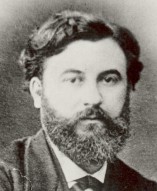 Charles-Émile Reynaud was born in 1844 and lived until 9 January 1918. He was a French science teacher, responsible for the first projected animated cartoon films. Reynaud created the Praxinoscope in 1877, it used a strip of pictures placed around the inner surface of a spinning cylinder.
Charles-Émile Reynaud was born in 1844 and lived until 9 January 1918. He was a French science teacher, responsible for the first projected animated cartoon films. Reynaud created the Praxinoscope in 1877, it used a strip of pictures placed around the inner surface of a spinning cylinder.
The Lumière brothers -
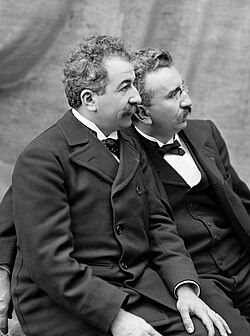 The Lumière brothers were born in Besançon, France, in 1862 and 1864, and moved to Lyon in 1870, where both attended La Martiniere, the largest technical school in Lyon. Their father, Claude-Antoine Lumière (1840–1911), ran a photographic firm and both brothers worked for him: Louis as a physicist and Auguste as a manager. Louis had made some improvements to the still-photograph process, the most notable being the dry-plate process, which was a major step towards moving images.
The Lumière brothers were born in Besançon, France, in 1862 and 1864, and moved to Lyon in 1870, where both attended La Martiniere, the largest technical school in Lyon. Their father, Claude-Antoine Lumière (1840–1911), ran a photographic firm and both brothers worked for him: Louis as a physicist and Auguste as a manager. Louis had made some improvements to the still-photograph process, the most notable being the dry-plate process, which was a major step towards moving images.
Production of films -
It was not until their father retired in 1892 that the brothers began to create moving pictures. They patented a number of significant processes leading up to their film camera, most notably film perforations as a means of advancing the film through the camera and projector. The cinématographe itself was patented on 13 February 1895 and the first footage ever to be recorded using it was recorded on March 19, 1895. This first film shows workers leaving the Lumière factory.The Lumieres held their first private screening of projected motion pictures in 1895. Their first public screening of films at which admission was charged was held on December 28, 1895, at Salon Indien du Grand Café in Paris. This history-making presentation featured ten short films, including their first film, Sortie des Usines Lumière à Lyon (Workers Leaving the Lumière Factory). Each film is 17 meters long, which, when hand cranked through a projector, runs approximately 50 seconds.Their actuality films, or actualites, are often cited as the first, primitive documentaries. They also made the first steps towards comedy film with the slapstick of L'Arroseur Arrose.
Replacement Animation -
Charles-Émile Reynaud -
 Charles-Émile Reynaud was born in 1844 and lived until 9 January 1918. He was a French science teacher, responsible for the first projected animated cartoon films. Reynaud created the Praxinoscope in 1877, it used a strip of pictures placed around the inner surface of a spinning cylinder.
Charles-Émile Reynaud was born in 1844 and lived until 9 January 1918. He was a French science teacher, responsible for the first projected animated cartoon films. Reynaud created the Praxinoscope in 1877, it used a strip of pictures placed around the inner surface of a spinning cylinder. The Praxinoscope -
The praxinoscope improved on the zoetrope by replacing its narrow viewing slits with an inner circle of mirrors, placed so that the reflections of the pictures appeared more or less stationary in position as the wheel turned. Someone looking in the mirrors would therefore see a rapid succession of images producing the illusion of motion, with a brighter and less distorted picture than the zoetrope offered.
The praxinoscope was later developed so the image could be projected onto a screen so an audience could view the images. This was called the Théâtre Optique.
(http://en.wikipedia.org/wiki/Praxinoscope)
(http://en.wikipedia.org/wiki/Praxinoscope)
Eadweard James Muybridge -
Eadweard James Muybridge was born in 1830 and he lived until 8 may 1904. He was an English photographer important for his pioneering work in photographic studies of motion and in motion-picture projection. He adopted the name Eadweard Muybridge, believing it to be the original Anglo-Saxon form of his name. He immigrated to the United States as a young man but remained obscure until 1868, when his large photographs of Yosemite Valley, California, made him world famous. Muybridge is known for his pioneering work on animal locomotion in 1877 and 1878, which used multiple cameras to capture motion in stop-action photographs, and his zoopraxiscope, a device for projecting motion pictures that pre-dated the flexible perforated film strip used in cinematography.
The Zoopraxiscope -
The zoopraxiscope is an early device for displaying motion pictures. It was created in 1879, it may be considered the first movie projector. The zoopraxiscope projected images from rotating glass disks in rapid succession to give the impression of motion. The stop-motion images were initially painted onto the glass, as silhouettes. A second series of discs, made in 1892–94, used outline drawings printed onto the discs photographically, then colored by hand. Some of the animated images are very complex, featuring multiple combinations of sequences of animal and human movement.
One of his most famous pieces of work was 'the horse in motion', it was an investigation into whether all four feet of a horse were off the ground at the same time during a gallop. His method of finding this out was very similar to the Zoopraxiscope.
The Lumière brothers -
 The Lumière brothers were born in Besançon, France, in 1862 and 1864, and moved to Lyon in 1870, where both attended La Martiniere, the largest technical school in Lyon. Their father, Claude-Antoine Lumière (1840–1911), ran a photographic firm and both brothers worked for him: Louis as a physicist and Auguste as a manager. Louis had made some improvements to the still-photograph process, the most notable being the dry-plate process, which was a major step towards moving images.
The Lumière brothers were born in Besançon, France, in 1862 and 1864, and moved to Lyon in 1870, where both attended La Martiniere, the largest technical school in Lyon. Their father, Claude-Antoine Lumière (1840–1911), ran a photographic firm and both brothers worked for him: Louis as a physicist and Auguste as a manager. Louis had made some improvements to the still-photograph process, the most notable being the dry-plate process, which was a major step towards moving images. Production of films -
It was not until their father retired in 1892 that the brothers began to create moving pictures. They patented a number of significant processes leading up to their film camera, most notably film perforations as a means of advancing the film through the camera and projector. The cinématographe itself was patented on 13 February 1895 and the first footage ever to be recorded using it was recorded on March 19, 1895. This first film shows workers leaving the Lumière factory.The Lumieres held their first private screening of projected motion pictures in 1895. Their first public screening of films at which admission was charged was held on December 28, 1895, at Salon Indien du Grand Café in Paris. This history-making presentation featured ten short films, including their first film, Sortie des Usines Lumière à Lyon (Workers Leaving the Lumière Factory). Each film is 17 meters long, which, when hand cranked through a projector, runs approximately 50 seconds.Their actuality films, or actualites, are often cited as the first, primitive documentaries. They also made the first steps towards comedy film with the slapstick of L'Arroseur Arrose.
George Pal -
George Pal was born in 1908 and he lived until May 2 1980. He was a Hungarian-born American animator and film producer, principally associated with the science fiction genre. He became an American citizen after emigrating from Europe. He was nominated for Academy Awards no less than seven consecutive years (1942–1948) and received an honorary award in 1944. This makes him the second most nominated Hungarian exile (together with William S. Darling and Ernest Laszlo) after Miklós Rózsa.
'The War of the Worlds' was a very popular film produced
by George Pal.
George Pal created 'replacement animation' in which multiple puppets were used to represent each action desired. The character would have numerous different heads with lots of different expressions for each for each syllable and facial movement. This took a large amount of time to do but once the heads were made, they would be re-used and would make production time much faster. '. George Pal also created armatures which allows the puppet to move. Using different heads for the puppets means that Pal could create more realistic facial gestures. This technique is used even now in 'The Nightmare Before Christmas

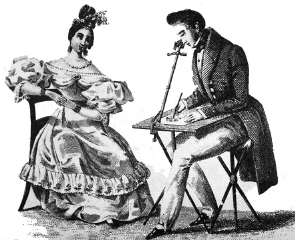

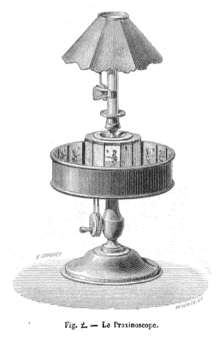
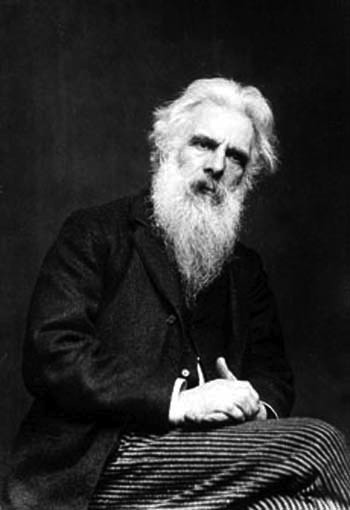


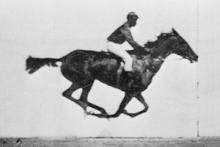
.jpg/220px-George_Pal_(1979).jpg)

No comments:
Post a Comment